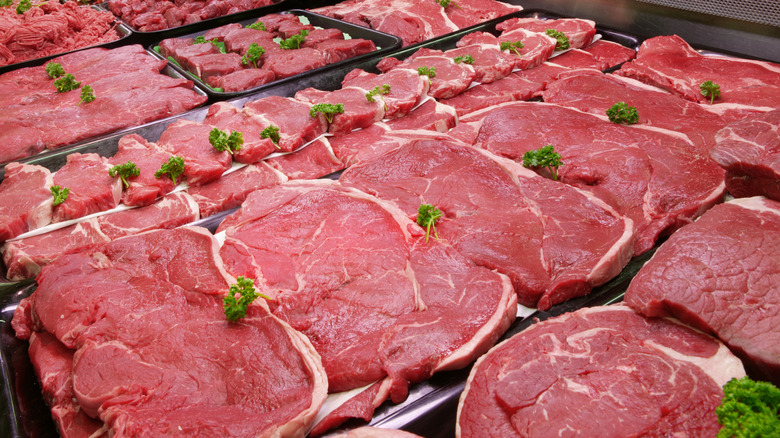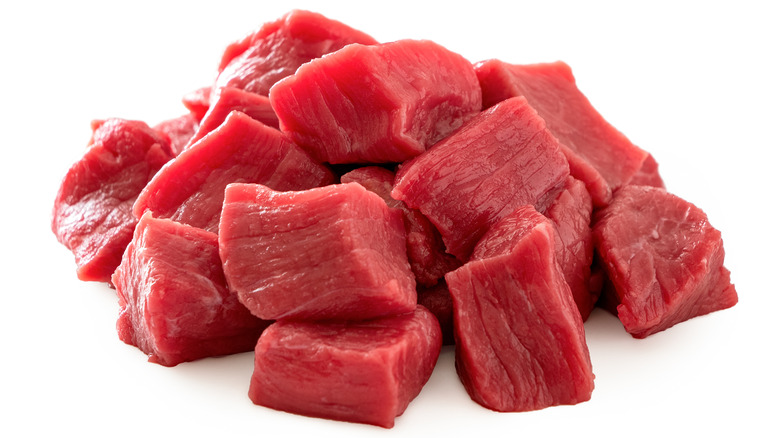The Difference Between Lean And Extra-Lean Cuts Of Beef
With heavy hitters like ribeye or porterhouse, fatty steaks get all the attention. Their tender texture and ease of cooking entice consumers, but there's magic to be found with lean cuts of beef, too.
While still retaining flavor, these pieces offer nutritional qualities that are easier to integrate into a balanced diet. There are many options to choose from — more than a dozen cuts fall into the lean umbrella. In fact, the specific distinction is federally regulated by the U.S. Department of Agriculture.
It's broken into two categories: lean and extra-lean. The former necessitates that 100 grams of beef contain less than 10 grams of fat, of which no more than 4.5 grams is saturated. The extra lean designation tightens it up even further — restricting it to 5 grams of fat, of which 2 grams is saturated. So past the internal fat content, what's the exact distinction between lean and extra-lean? Let's dive in.
Lean and extra-lean cuts necessitate tailored preparations
While lean cuts can be found in various parts of the cow, extra-lean cuts are all located at the rear of the animal. They comprise two categories: exterior cuts of sirloin and a selection of round roasts. Even upon visual inspection, it's easy to tell such cuts are low in fat — look at a sirloin tip, or London broil, and there's not much white that meets the eye.
Since these cuts don't contain much moisture, it's helpful to marinate them before cooking. Not only will this infuse flavor, but it also adds extra fat and breaks down internal proteins. Additionally, consider slow cooking — especially for a round roast. Just because the fat content is low, it can still yield a red, tender piece of meat.
Lean cuts encompass a broader category. With careful fat trimming, they can be found in all parts of a cow except for rib and plate regions, which don't experience enough movement. The same marination and slow-cooking recommendations apply. However, there are even options that can be seared like a steak — a T-bone, for example. Cook lean steak quickly and at a hot temperature. And remember to be extra mindful of practices like resting and cutting against the grain to ensure a tender bite.

